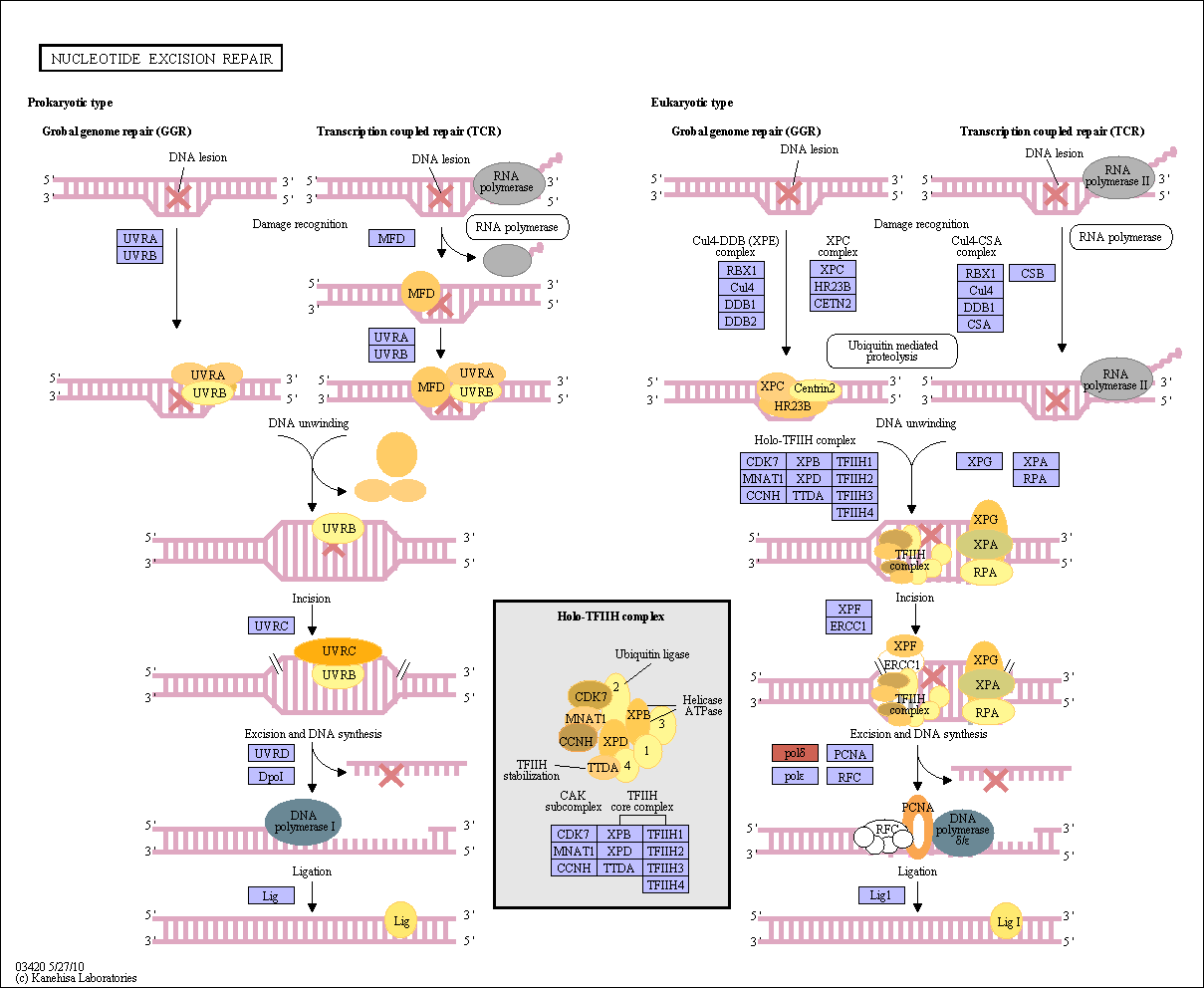|
Nucleotide excision repair (NER) is a mechanism to recognize and repair bulky DNA damage caused by compounds, environmental carcinogens, and exposure to UV-light. In humans hereditary defects in the NER pathway are linked to at least three diseases: xeroderma pigmentosum (XP), Cockayne syndrome (CS), and trichothiodystrophy (TTD). The repair of damaged DNA involves at least 30 polypeptides within two different sub-pathways of NER known as transcription-coupled repair (TCR-NER) and global genome repair (GGR-NER). TCR refers to the expedited repair of lesions located in the actively transcribed strand of genes by RNA polymerase II (RNAP II). In GGR-NER the first step of damage recognition involves XPC-hHR23B complex together with XPE complex (in prokaryotes, uvrAB complex). The following steps of GGR-NER and TCR-NER are similar. |
 Nucleotide excision repair - Reference pathway (KO)
Nucleotide excision repair - Reference pathway (KO)

 Nucleotide excision repair - Reference pathway (KO)
Nucleotide excision repair - Reference pathway (KO)

